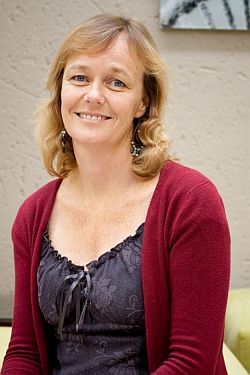
Project leader, Dr Jeanne Nel, specialises in integrative spatial ecosystem analysis and works for CSIR Natural Resources and the Environment in Stellenbosch.
According to Santam strategy analyst, Edmond Lee, Santam’s entry explicitly stated that “the Eden project is not just a project we sponsor financially – it is rather a partnership where each partner made financial and knowledge contributions to make it a success, hence a true collaborative effort”.
‘Risk and resilience in a changing world: the insurance collaboration’ is a strategic research partnership between Santam, the CSIR, the WWF South Africa, and the University of Cape Town’s Centre of Criminology. In this study, researchers used the Eden District Municipality in the Southern Cape as a case study to illustrate the potential response by the formal insurance industry to reducing risk and improving the resilience of the landscape in which it operates.
The study area was chosen based on its varied land uses and urban growth, the considerable assets underwritten by Santam, as well as the recent volatile weather conditions that the area has experienced. Between 2003 and 2008, the Western Cape experienced eight severe storm events resulting in more than R2.5 billion worth of direct damage. More than 70% of this damage occurred in the Eden District Municipality.
According to project leader, Dr Jeanne Nel, the award illustrates how business and science partnerships can find innovative ways to deal with the challenges and risks that society face.
“Santam’s proactive stance, namely, to help society manage the risks they face from the future impacts of climate change, should serve as an example to the industry,” she commented.
For this project, a multi-disciplinary group of researchers from CSIR Natural Resources and the Environment pooled their expertise. This included expertise in integrative spatial ecosystem assessment (Jeanne Nel); ecosystem services and risk assessment (Belinda Reyers); climate change modelling (Francois Engelbrecht); estuary science (Lara van Niekerk); integrative risk modelling (Sally Archibald); sustainability science and resource economics (Kristy Faccer); as well as risk modelling expertise in floods (David le Maitre), fire (Greg Forsyth) and coastal areas (Andre Theron).
Some of the key findings and recommendations include:
- Climate changes are driving risks higher;
- Human-induced changes to land cover and the buffering capacity of ecosystems are of equal or greater importance in driving risk when compared to climate change; and
- Actual risk to any individual asset is an emergent property of non-linear interactions between the different drivers of risk.
According to the group’s final research report, proactive management of local drivers of risk such as fire, alien invasives and degraded coastal areas can offset most of the increased risk associated with climate change. This also emphasises the role the insurance industry can play in ‘managing risk’ by working together with local government and communities, rather than focusing on ‘risk assessment’ only, says Nel.
Another feather in this group’s cap was the launch of the United Nations Environment Programme Finance Initiative’s publication, Insurance in a changing risk landscape: Local lessons from the Southern Cape of South Africa, during the climate change negotiations in Durban last year. In the foreword to the publication, the head of the initiative, Paul Clemens-Hunt, described the Eden project as “a concrete and timely example of how working together can bring about effective adaptation where it makes a real impact – on the ground”.
And the last word from Santam: “This was truly a joint effort, and we would like to take this opportunity to thank you for your effort in this holistic approach. None of this would be possible without your contributions.”
News contributed by Wiida Basson, CSIR Strategic Communication


Comments are closed.